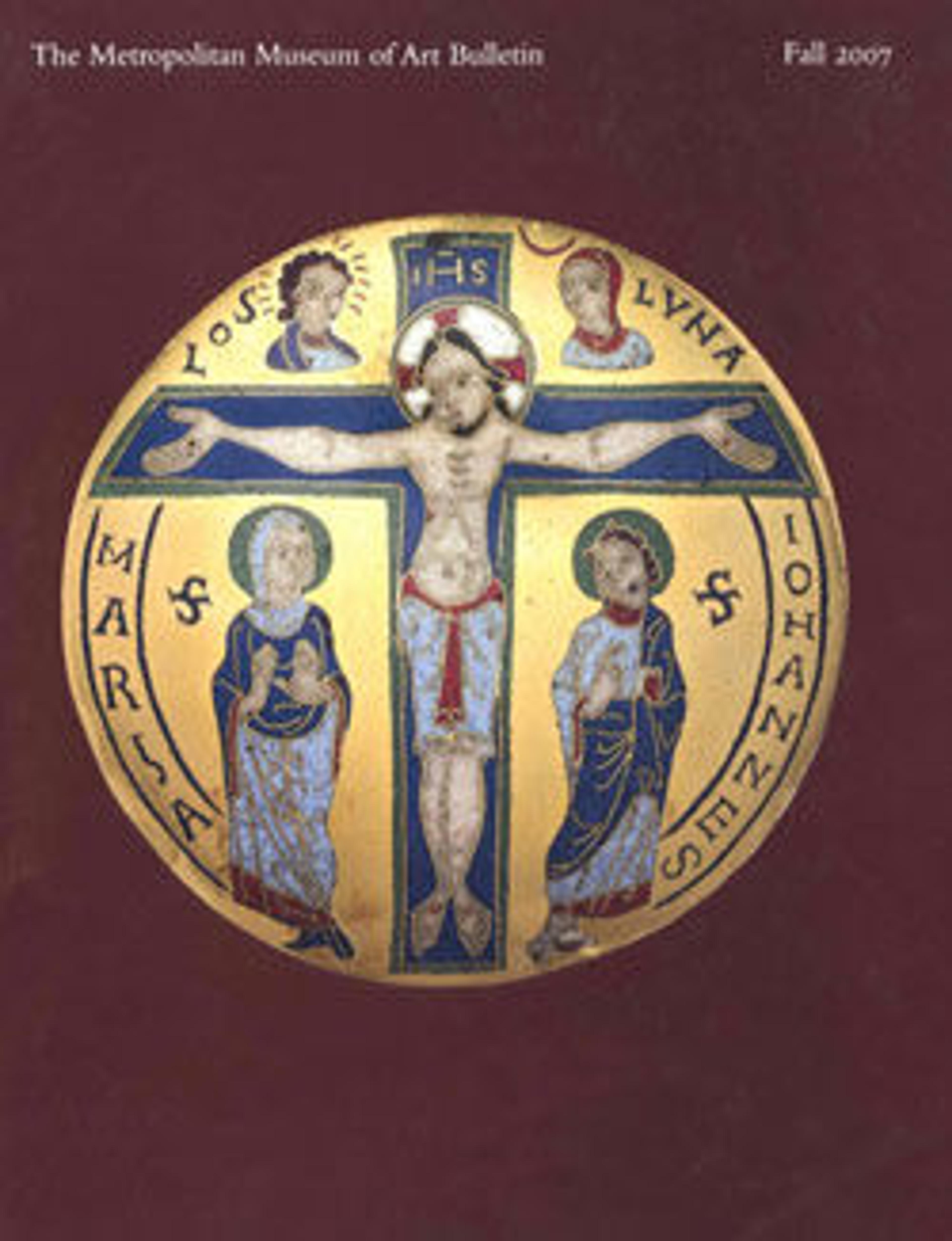Ten Thousand Miles along the Yellow River
Given the constant threat of flooding from the Yellow River, the study and management of that river system was one of the highest priorities of the Qing court. This monumental map graphically illustrates the complexity of controlling the Yellow River's channel and its potential impact on the numerous towns and cities in its drainage area. Painted around the time that the Kangxi emperor (r. 1662–1722) engaged a team of Jesuit missionaries to conduct a comprehensive survey of his empire, the map reflects the highest level of indigenous mapmaking before the introduction of European techniques. Indeed, the map's appeal lies not in its cartographic accuracy but in its pictorial treatment of terrain features. To unroll the scrolls is to vicariously experience the drama of voyaging up the Yellow River from the East China Sea to the rapids of the Dragon Gate.
The map merges panoramic landscape painting and cartography: waterways are rendered in a planometric fashion (that is, they lie flat on the picture surface); mountains are depicted frontally; and architecture, notably walled towns and cities, are shown as isometric projections. There is no consistent use of foreshortening, perspective, atmospheric distortion, or diminution of scale to suggest spatial recession. One may speak of the bottom or top of the composition, but there is no measurable distinction between the foreground and the far distance. Nevertheless, the map is visually coherent, and its seemingly unbounded view of vast expanses enables the viewer to grasp far more than the eye could see in reality.
The map merges panoramic landscape painting and cartography: waterways are rendered in a planometric fashion (that is, they lie flat on the picture surface); mountains are depicted frontally; and architecture, notably walled towns and cities, are shown as isometric projections. There is no consistent use of foreshortening, perspective, atmospheric distortion, or diminution of scale to suggest spatial recession. One may speak of the bottom or top of the composition, but there is no measurable distinction between the foreground and the far distance. Nevertheless, the map is visually coherent, and its seemingly unbounded view of vast expanses enables the viewer to grasp far more than the eye could see in reality.
Artwork Details
- 清 佚名 黃河萬里圖 卷
- Title: Ten Thousand Miles along the Yellow River
- Artist: Unidentified artist Chinese, active late 17th–early 18th century
- Period: Qing dynasty (1644–1911)
- Date: datable to 1690–1722
- Culture: China
- Medium: Two handscrolls; ink, color, and gold on silk
- Dimensions: Image: 30 11/16 in. × 42 ft. 1 7/8 in. (78 × 1285 cm)
Overall with mounting: 32 7/8 in. × 42 ft. 1 7/8 in. (83.5 × 1285 cm) - Classification: Paintings
- Credit Line: Purchase, W. M. Keck Foundation Gift, The Dillon Fund Gift and gifts from various donors, in memory of Douglas Dillon, 2006
- Object Number: 2006.272a, b
- Curatorial Department: Asian Art
Audio
7415. Ten Thousand Miles along the Yellow River
0:00
0:00
We're sorry, the transcript for this audio track is not available at this time. Please email info@metmuseum.org to request a transcript for this track.
More Artwork
Research Resources
The Met provides unparalleled resources for research and welcomes an international community of students and scholars. The Met's Open Access API is where creators and researchers can connect to the The Met collection. Open Access data and public domain images are available for unrestricted commercial and noncommercial use without permission or fee.
To request images under copyright and other restrictions, please use this Image Request form.
Feedback
We continue to research and examine historical and cultural context for objects in The Met collection. If you have comments or questions about this object record, please contact us using the form below. The Museum looks forward to receiving your comments.
